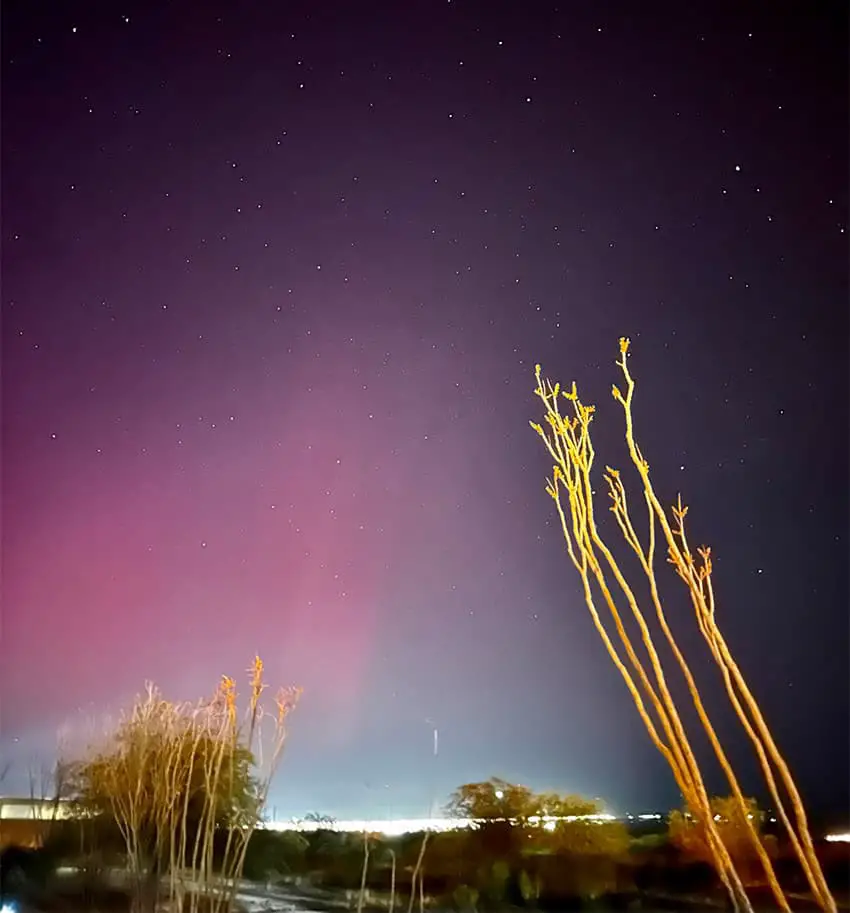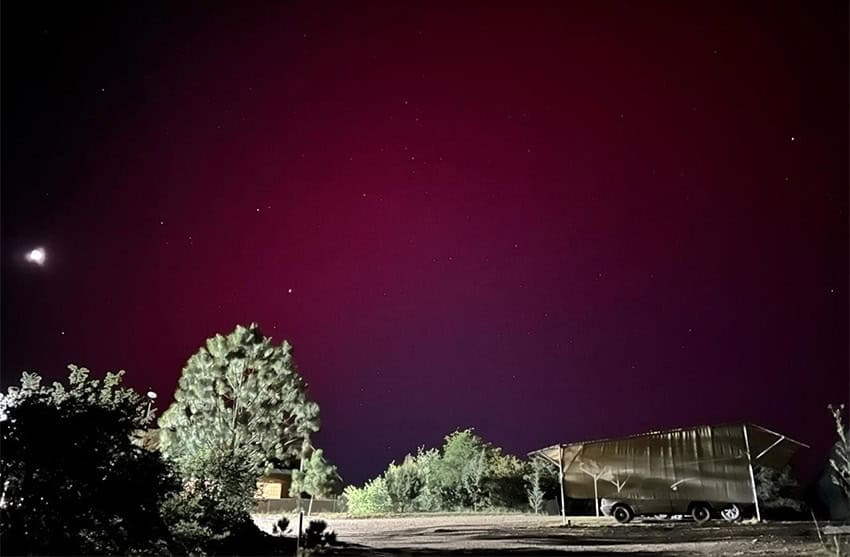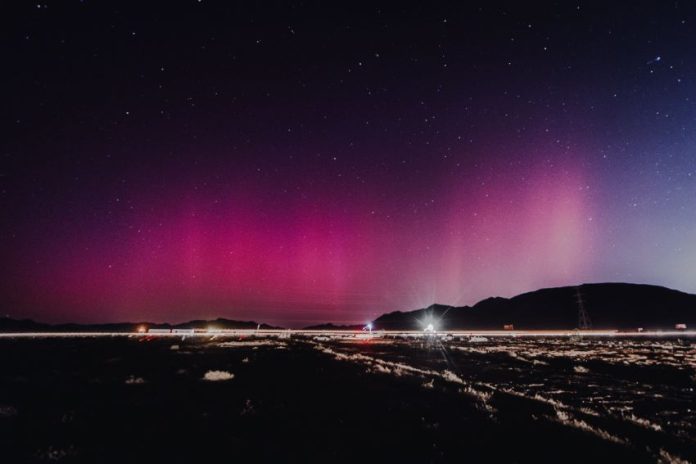Thousands of miles from the Arctic regions where the northern lights are common, Mexicans were treated to mesmerizing aurora displays on Friday and Saturday nights.
Solar flares sparked what the Space Weather Prediction Center of the U.S. National Oceanic and Atmospheric Administration (NOAA) described as the biggest geomagnetic storm in two decades, a storm big enough to cause a rare appearance in Mexico, where variations of green, pink and purple lights subtly illuminated the night sky in some areas.
An aurora borealis at Mexican latitudes as south as Yucatán is not something I thought was even possible until Friday night.
Yet here we are.
These photos were taken on Sinaloa, Mexico, on May 10th, 2024 (24°N) pic.twitter.com/RK5GZcEHGi
— Alfredo Juárez (@alfrekjv) May 13, 2024
Plasma from a powerful solar eruption called a coronal mass ejection (CME) slammed into Earth on Friday, sparking an intense geomagnetic storm, explained the news platform Space.com.
The plasma carries magnetic clouds that interact with the Earth’s magnetic field when it finds the planet on its path through interplanetary space. The interaction produces the light display witnessed over the weekend.
One of the effects was a supercharged northern lights display, which provided skywatchers in Mexico and other regions around the world with dazzling aurora views over the weekend. Skywatchers from the northern border city of Mexicali to the southeastern state of Yucatán reported seeing the effects of the solar flares.
The newspaper Riviera Maya News reported that views of the aurora borealis extended all the way to the east of the Yucatán Peninsula where people on Holbox Island witnessed the rare sighting. Sightings of northern lights were also reported in Chihuahua, Zacatecas and Sonora.

The natural lighting phenomenon, rarely visible in the region, was not as intense as it was in the United States.
Scientists from the Geophysics Institute at the National Autonomous University of Mexico (UNAM) said that by Sunday evening the 39-hour phenomenon had concluded, but did report that another solar storm could produce a few additional hours of northern lights, though they would be less dramatic.
Heading into the weekend, the Baja California Civil Protection agency had alerted residents near the U.S. border that the display was viewable on the horizon to the north in places with little light pollution.
It also assured residents that the aurora borealis did not represent any danger, though warning that “in some cases it could generate slight and temporary interference in telecommunications systems.”

The World Meteorological Organization (WMO) reported on Monday that while the northern lights “are a delightful spectacle, geomagnetic storms also have potentially disrupting impacts such as the stress they can impose on the power grid due to induced currents in power lines, and possible impacts on communication and satellite operations.”
The WMO also said that the current cycle of solar storms reached its maximum last week and predictions of the the event turned out to be accurate. The weekend spectacle and its attendant dangers highlight the importance of forecasting potentially disruptive space weather events, the WMO said.
With reports from La Jornada, López-Dóriga Digital and El País
